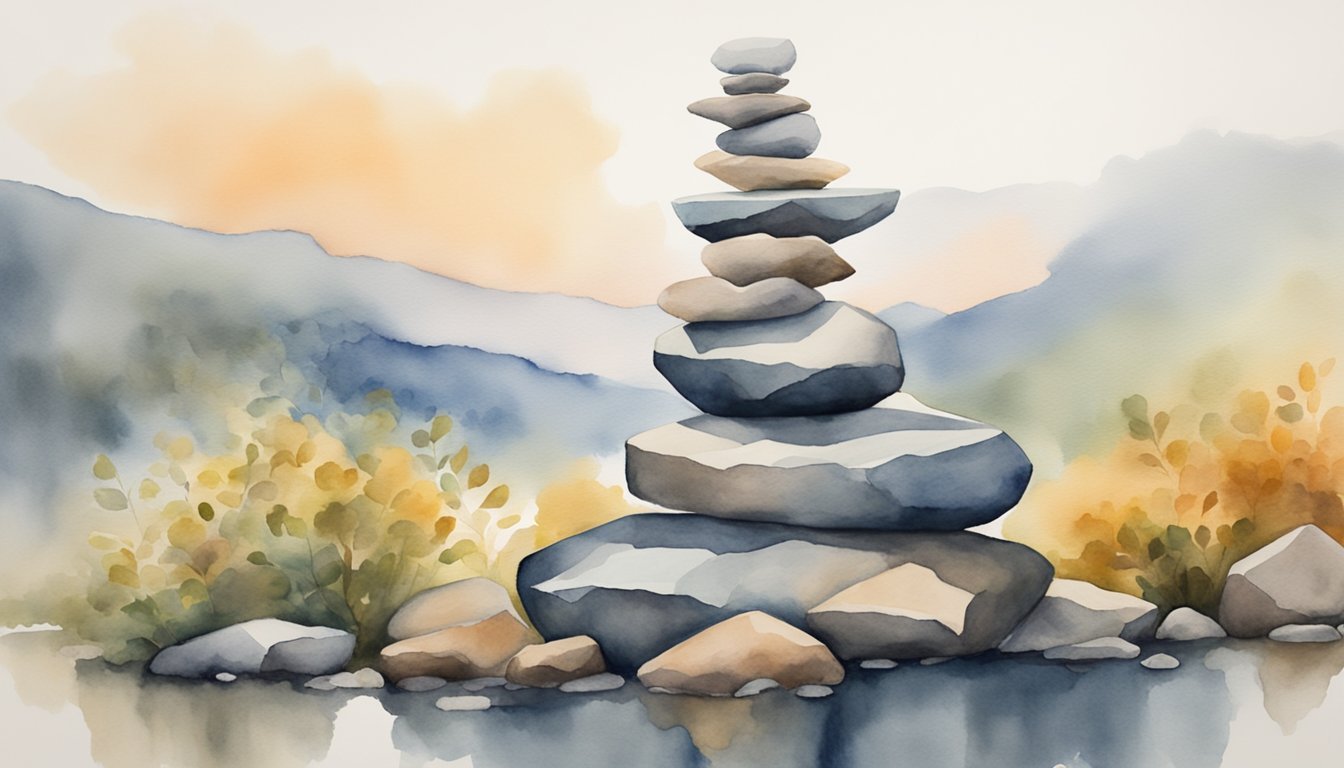Understanding Cairns and Their Significance
Cairns have historically served as significant markers for various purposes ranging from wayfinding to spiritual. They represent a complex intertwining of practical use and profound meaning across different cultures and times.
Historical Context and Origins
The origins of cairns can be traced back to ancient times when pile of stones were set up for various reasons including navigation and as burial markers. Many of these structures were built without the use of mortar or cement, relying instead on the careful placement and balance of stones. In Native American cultures, such stacks of rocks, including cairns, were often used to mark trails or indicate the presence of food and water caches, and in some cases, to mark burial sites. On the paths of the Camino de Santiago, a famous pilgrimage route in Spain, cairns serve as trail markers guiding pilgrims on their journey.
Cairns Around the World
Various forms of cairns or stacks of rocks appear around the globe, serving as cultural symbols and functional landmarks. The Inukshuks of the Arctic regions resemble human figures and have traditionally been used by the Inuit as navigation aids in the vast and featureless Arctic landscape. In Scotland, Clava Cairns are prehistoric burial mounds surrounded by large stones, and the Bates Cairns in the United States are used to guide hikers through the Acadia National Park. In each location, these heap of stone inherit a mix of practical purpose and the cultural beliefs of the people who built them.
Cairns in Modern Times
Today, cairns continue to hold sway in both their historical roles and in new contexts. They are still widely used for navigation in hiking and are important elements in national parks and trails. However, they also hold a spiritual significance for many; in Buddhism, the act of stacking rocks is sometimes seen as an action that brings good luck. These rock sculptures can be a quiet point of reflection or express personal or spiritual practices, often being built as an act of mindfulness or an offering. Yet, the practice of building new cairns is sometimes discouraged to preserve natural landscapes and prevent confusion with established navigational markers.
What Do Cairns and Stone Piles Have to Do with Currency and Nickels?
Cairns and stone piles serve as markers, much like currency, guiding travelers through unknown landscapes. The simplicity of these structures echoes the fundamental concept of understanding the nickel. Both represent value, navigation, and the importance of recognizing small details that contribute to a bigger journey or purpose in life.
The Cultural and Spiritual Connection

Stacked rocks serve as a bridge between the physical world and the intangible essence of cultural and spiritual beliefs. These rock formations are more than just stones balanced upon one another; they are steeped in symbolism and are a universal language of mindfulness and remembrance.
Spiritual Meanings in Nature
Rock stacking has ancient roots in various practices around the globe. People often create these structures in nature as a form of spiritual meditation, aligning stones with precision and care. This process requires focus and patience, reflecting a meditator’s journey towards inner peace and balance. They are seen as a means to commune with the earth and convey gratitude for its abundance. In some traditions, they are erected as monuments of prayer or as markers of hope on a spiritual path.
Art and Expression Through Stacked Rocks
As a form of outdoor art, stacked rocks symbolize the human desire for expression and the perseverance to create. Artists and nature enthusiasts alike find tranquility and happiness in the act of balancing these natural elements. Such structures can embody strength and growth, as they withstand the elements, just as humans endure challenges. Stacked rocks can also be a ritualistic articulation of love and healing, a physical manifestation of a connection to the universe at large, imbued with personal and communal significance.

